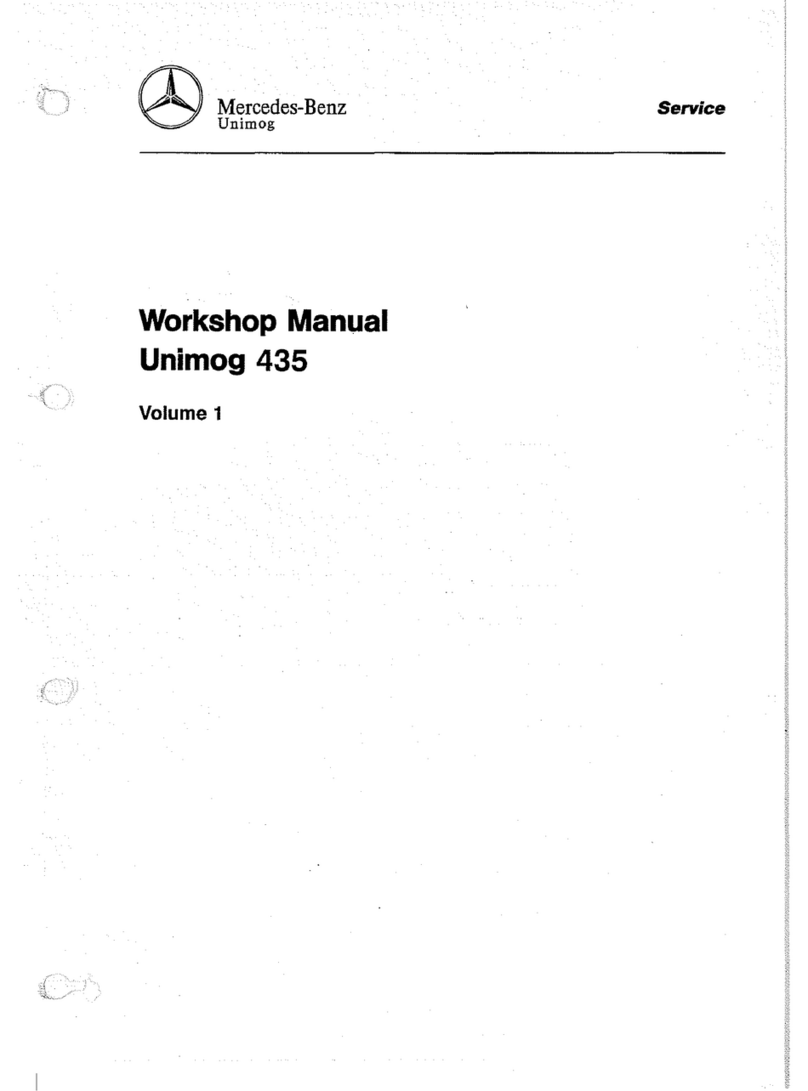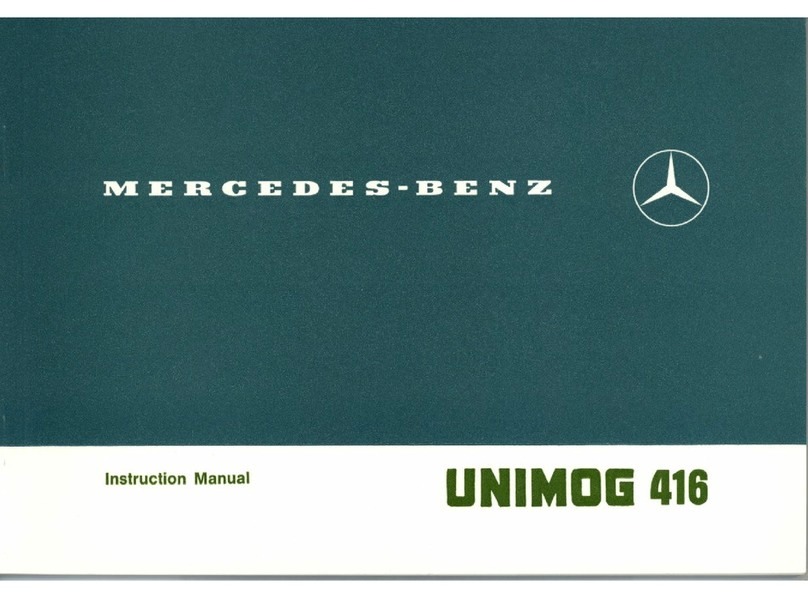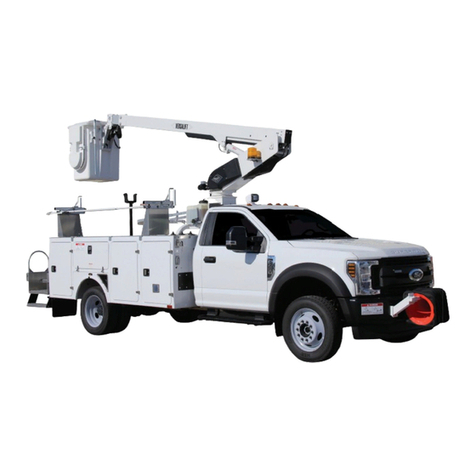
7
Ignition lock
General description
Towing and Recovery | Actros, Antos (Model 963), Arocs (Model 964)
Depending on the vehicle equipment, either an electronic
ignition lock or a mechanical ignition lock may be installed.
The electronic ignition lock consists of the key slot;for ac-
cepting the key= and the two-stage start/stop button:.
To switch the electronic ignition lock, insert the key=all
the way into the key slot;. Insert the key=into the key
slot with the Mercedes star facing upwards.
The electronic ignition lock has the following switch
positions:
• 0
Insert key=.
The ignition and the instrument cluster display are o.
• 1- Radio position.
Power supply for some consumers.
• 2- Drive position.
The ignition is switched on. The instrument cluster display
shows a menu window or an event window.
• 3- Starting position.
When the key=is inserted and you press the start/stop
button:all the way down, you switch the electronic ig-
nition lock to position3and start the engine.
When the key=is inserted and you press the start/
stop button:as far as the 1st switching threshold, you
switch the electronic ignition lock to the next position 0,
1and 2. If you press the start/stop button in position2,
you switch the electronic ignition lock back to position0.
Performing one of the following actions while the vehicle is
stationary will switch the engine o:
• Press the start/stop button:all the way down. The
electronic ignition lock is then in position1.
• Press the start/stop button: as far as the 1stswit-
ching threshold and then release it. The electronic igni-
tion lock is then in position1.
• Remove the key=from the key slot. The electronic igni-
tion lock is then in position0.
Key positions in mechanical ignition lock
When you remove the key in position0, the steering is
locked.
b Note
The brochure describes all the switch positions on the
electronic ignition lock.
uTo insert/remove the vehicle key
1Steering wheel unlocked/radio position
2Drive position
3Start position
Switch positions of electronic ignition lock







































